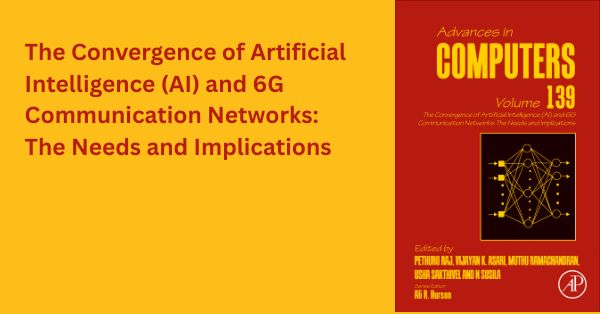SoftBank to Build Japan’s Most Advanced AI Supercomputer with NVIDIA Blackwell
During the NVIDIA AI Summit Japan, NVIDIA announced its strategic partnership with SoftBank Corp. to bolster Japan’s AI capabilities and position the country as a global AI powerhouse. This initiative aims to harness significant revenue opportunities for telecommunications providers worldwide, unlocking potential worth billions.
Jensen Huang, NVIDIA’s founder and CEO, highlighted that SoftBank is developing Japan’s most powerful AI supercomputer, powered by the NVIDIA Blackwell platform. Plans are also in motion to incorporate the NVIDIA Grace Blackwell platform for future systems.
Integrating AI and 5G to Transform Telecom Profitability
SoftBank, leveraging NVIDIA’s AI Aerial accelerated computing platform, has pioneered the integration of AI and 5G, resulting in the world’s first live AI-RAN (Artificial Intelligence Radio Access Network). This breakthrough offers telecom operators new revenue streams and transforms base stations from traditional cost centers into profitable AI assets.
Building a Secure AI Marketplace with NVIDIA AI Enterprise Software
In addition to infrastructure advancements, SoftBank plans to use NVIDIA AI Enterprise software to create a secure, localized AI marketplace. This initiative will enable AI training and edge AI inference, positioning SoftBank as a key AI resource for industries, enterprises, and consumers across Japan.
“Japan’s innovative technology history is now poised for a new era with AI-driven solutions,” said Huang. “SoftBank’s collaboration with NVIDIA covers the entire AI stack, including Omniverse and 5G AI-RAN platforms, creating growth opportunities in sectors like telecommunications, transportation, robotics, and healthcare.”
Junichi Miyakawa, president and CEO of SoftBank, emphasized their focus on leading AI-driven transformation, stating, “Our advanced AI infrastructure and distributed AI-RAN solution ‘AITRAS’ will enhance innovation across Japan and globally.”
Deployment of NVIDIA DGX™ B200 Systems and Grace Blackwell Supercomputer
SoftBank is set to receive the world’s first NVIDIA DGX™ B200 systems, forming the foundation of its new NVIDIA DGX SuperPOD™ supercomputer. This system will support generative AI development and facilitate collaborations with universities, research institutions, and businesses. The DGX SuperPOD, featuring NVIDIA AI Enterprise software and Quantum-2 InfiniBand networking, aims to become Japan’s most high-performing AI system.
Future plans include a second supercomputer utilizing the NVIDIA Grace Blackwell platform, designed for compute-intensive workloads and incorporating NVIDIA GB200 NVL72 multi-node systems with liquid-cooled Blackwell GPUs and efficient Arm-based Grace™ CPUs.
Milestones with AI-RAN Technology and 5G Integration
In partnership with NVIDIA, SoftBank has introduced AI-RAN technology that merges AI and 5G network capabilities. This development, validated through trials in Kanagawa prefecture, demonstrated carrier-grade 5G performance while concurrently handling AI inference workloads. By utilizing unused network capacity, this technology enables telcos to generate revenue from AI services, optimizing network usage and increasing profitability.
NVIDIA and SoftBank project that telco operators can potentially earn up to $5 in AI inference revenue for every $1 of capex invested in new AI-RAN infrastructure. SoftBank’s internal estimates indicate a return on investment of up to 219% for each AI-RAN server added.
AI-RAN Applications: Autonomous Vehicles & Robotics
During trials, SoftBank leveraged NVIDIA AI Enterprise to develop AI inference applications such as autonomous vehicle remote support and robotics control. These applications operated seamlessly on SoftBank’s AI-RAN network, showcasing its real-world capabilities. SoftBank’s software-defined 5G radio stack, optimized with NVIDIA’s Aerial™ CUDA®-enhanced RAN libraries, includes plans for further integration of energy-efficient NVIDIA Aerial RAN Computer-1 systems.
Balancing AI Demand and Supply with Dynamic Compute Scalability
To ensure dynamic compute scalability, SoftBank aims to build an AI ecosystem using NVIDIA AI Enterprise serverless APIs and a proprietary orchestrator. This enables the distribution of AI inference jobs based on available network resources, delivering secure, low-latency services.
“Transforming single-purpose networks into multi-purpose AI-RAN systems can yield five times the revenue per dollar of investment,” noted Ronnie Vasishta, NVIDIA’s senior vice president of telecom. The SoftBank-NVIDIA trial marked a significant step toward AI-RAN commercialization.
SoftBank’s ‘AITRAS’ solution, developed in collaboration with NVIDIA over five years, integrates AI and RAN workloads, improving communication efficiency through dense cell management on a single GPU server. Ryuji Wakikawa, vice president of SoftBank’s Advanced Technology Research Institute, expressed confidence that AITRAS would enable new business models and transform mobile operators.






























